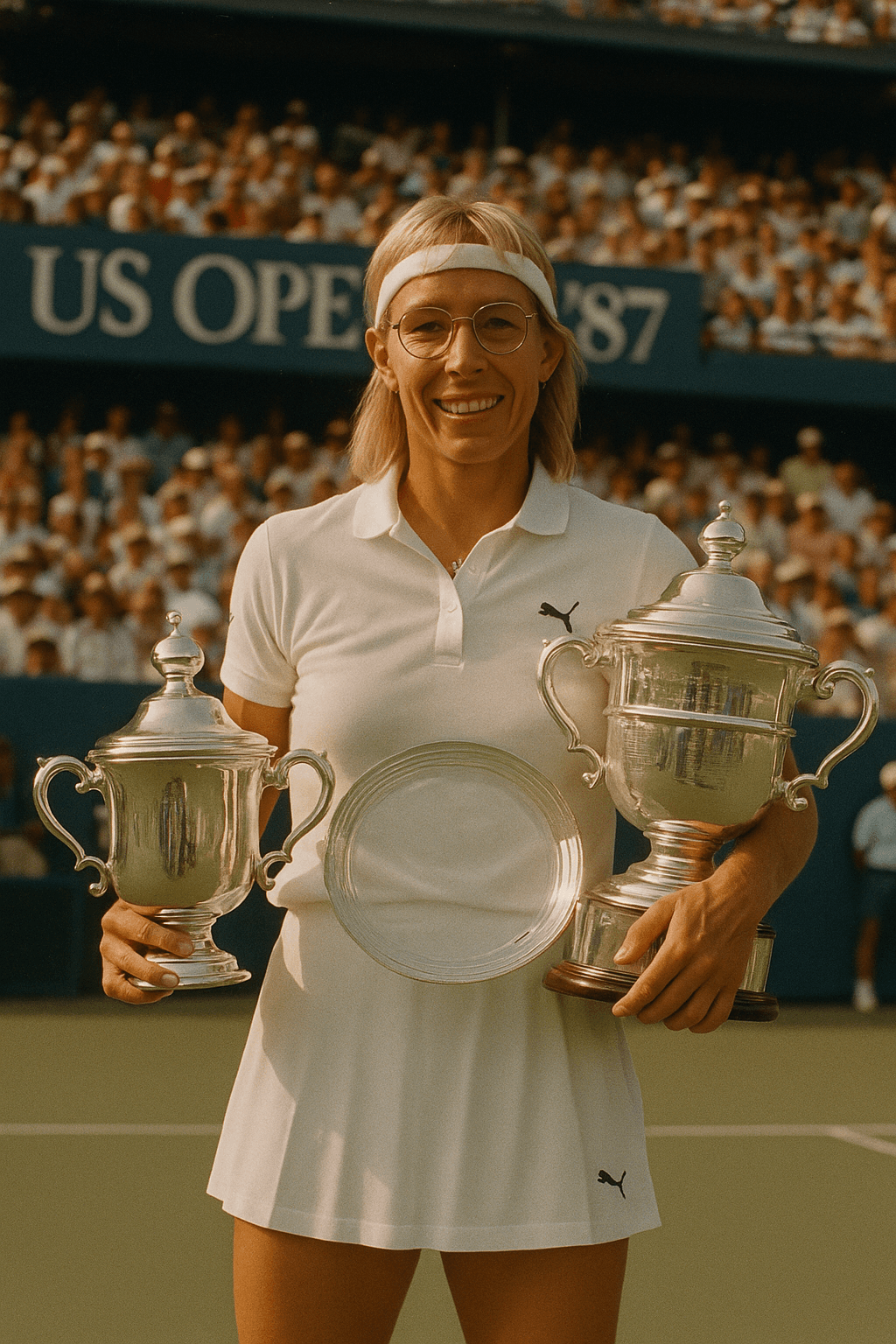When Martina Navratilova stepped onto the courts at the U.S. Open in 1987, she was already a tennis legend. But what she accomplished that September cemented her place in history as the last player—male or female—to achieve one of tennis's most elusive feats: winning the triple crown at a single Grand Slam tournament.
What Is the Tennis Triple Crown?
The tennis triple crown means winning all three possible titles at one major tournament: singles, doubles, and mixed doubles. It's a display of versatility, endurance, and pure tennis mastery that requires competing across multiple draws while maintaining peak performance throughout the entire fortnight.
At the U.S. Open 1987, Navratilova did exactly that. She claimed the singles title, partnered with Pam Shriver to win the women's doubles, and teamed with Emilio Sanchez to capture the mixed doubles crown. Three titles, one tournament, one extraordinary champion.
Why Navratilova's Achievement Was Historic
Navratilova's 1987 U.S. Open triple crown wasn't just impressive—it was the end of an era. She became the last player to accomplish this feat at any Grand Slam tournament, a record that has stood unchallenged for over 35 years.
The Czech-American champion was uniquely positioned to achieve this milestone. Her all-court game translated seamlessly between singles and doubles play, her fitness levels were legendary, and she possessed the mental fortitude to compete across multiple events without losing focus. Most importantly, she played during an era when top singles players regularly competed in doubles events.
The Modern Challenge: Why We'll Likely Never See Another Triple Crown
Today's tennis landscape makes the triple crown nearly impossible, especially on the men's side. Here's why:
Specialization Over Versatility: Modern tennis has become increasingly specialized. Top singles players focus exclusively on singles, viewing doubles as a distraction rather than an opportunity. The physical and mental demands of competing at the highest level in singles make it impractical to spread energy across multiple events.
Prize Money Disparity: The financial incentives heavily favor singles play. A first-round singles exit at a major earns more prize money than winning many doubles titles. For elite players, the risk-reward calculation simply doesn't add up.
Physical Demands: Today's tennis is more physically demanding than ever. The power, speed, and intensity of modern matches require complete focus and recovery time. Adding doubles matches to an already grueling singles schedule increases injury risk significantly.
Scheduling Conflicts: Grand Slam scheduling often creates conflicts between singles and doubles matches, forcing players to choose. Tournament organizers prioritize singles matches, sometimes leaving doubles players scrambling.
Men's Tennis: An Even Greater Challenge
The men's game presents additional obstacles to achieving a triple crown:
Power vs. Finesse: Men's singles emphasizes raw power and aggressive baseline play, while doubles rewards finesse, volleying skills, and court positioning—skills that many modern singles specialists haven't fully developed.
Longer Matches: Men play best-of-five sets in singles, creating more physical strain and longer recovery periods between matches.
Cultural Shift: Unlike previous generations where champions like John McEnroe and Stefan Edberg excelled in both singles and doubles, today's male stars rarely venture into doubles play at majors.
The Rarity Makes It Special
Perhaps the impossibility of the modern triple crown makes Navratilova's achievement even more remarkable. In an era of increasing specialization, her 1987 Wimbledon performance represents a level of tennis versatility that may never be matched.
While we continue to witness incredible individual performances in singles, doubles, and mixed doubles, the convergence of all three in one tournament by one player seems destined to remain a relic of tennis's past—a testament to an era when champions were expected to master every aspect of the game.
Conclusion
Martina Navratilova's 1987 U.S. Open triple crown stands as one of tennis's most enduring records, not because no one is talented enough to break it, but because the modern game has evolved in ways that make such versatility nearly impossible.
As we watch today's specialists dominate their chosen disciplines, we can appreciate Navratilova's achievement for what it truly was: the perfect storm of talent, timing, and tennis culture that created a record likely to stand forever.
Follow our tennis app for more deep dives into tennis history, strategy analysis, and insights from the world's greatest sport.
Meta Description: Discover why Martina Navratilova's 1987 Wimbledon triple crown remains tennis's most unbreakable record and why we'll likely never see another player win singles, doubles, and mixed doubles at the same Grand Slam.
Tags: Tennis history, Martina Navratilova, Wimbledon, Grand Slam records, tennis triple crown, tennis strategy, sports history

